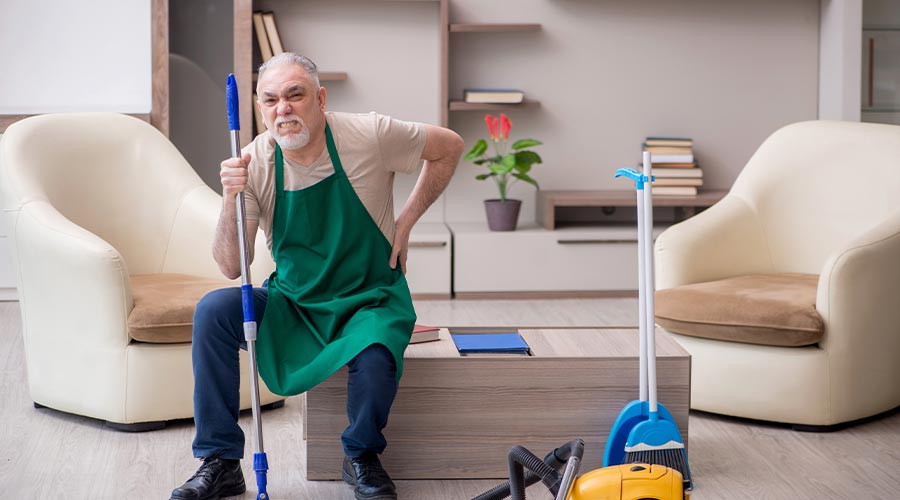
The ergonomic revolution in cleaning tools is far from over. In fact, it has bounced back tremendously as the workforce has evolved since the pandemic. Here's a glimpse into what the future might hold, including some innovations that are already making a splash in the field:
• Smart Sensors and Biofeedback: Imagine mops that track worker posture and provide real-time feedback to minimize strain. Sensors embedded in handles could monitor grip strength and alert workers to adjust their technique before fatigue sets in.
• Connected Cleaning Systems: Interconnectivity could be another game-changer. Cleaning carts equipped with docking stations for charging batteries on electric equipment could streamline workflows and improve efficiency.
• VR Training and Onboarding: Virtual reality simulations can create realistic training environments for janitorial staff to learn proper ergonomic techniques in a safe, controlled setting, as well as practice or experiment with different program paths.
• Sustainable Ergonomics: At some point, the current trend toward sustainable innovations will merge with ergonomic design. For instance, recycled plastic handles or biodegradable mop heads made of less dense materials could mean a lighter environmental footprint without sacrificing worker comfort.
The continued evolution of ergonomic cleaning tools depends on the shared knowledge and creativity of manufacturers, physical therapists, and cleaning industry professionals. By combining scientific research with in-the-field feedback and technology, the cleaning industry can create a future where worker well-being and cleaning performance go hand-in-hand.
Managers can also work to educate frontline teams about adjustments and proper posture as new tools are developed and introduced, so as to combat the usual resistance to change.
“Many people don’t fear change; they just don’t want to be there when it happens,” says Kerst. “It’s imperative to explain why an ergonomics adjustment is necessary, explain why doing a task incorrectly is risky, and then explain the benefits of doing it the right way.”
Ergonomics isn't just about reacting to injuries. By proactively investing in ergonomic tools and training workers in proper technique, facility cleaning managers can create a preventative approach to worker wellness. This reduces the risk of costly workplace injuries and helps maintain a healthy and productive cleaning team.
Jackson Silvanik is the managing editor of Facility Cleaning Decisions, Contracting Profits and Sanitary Maintenance magazines, as well as CleanLink.com.
Evaluating the Evolution of Ergonomic Equipment

 The Down and Dirty on Cleaning in Virus Season
The Down and Dirty on Cleaning in Virus Season How Surfactant Use is Expanding in Commercial Cleaning
How Surfactant Use is Expanding in Commercial Cleaning